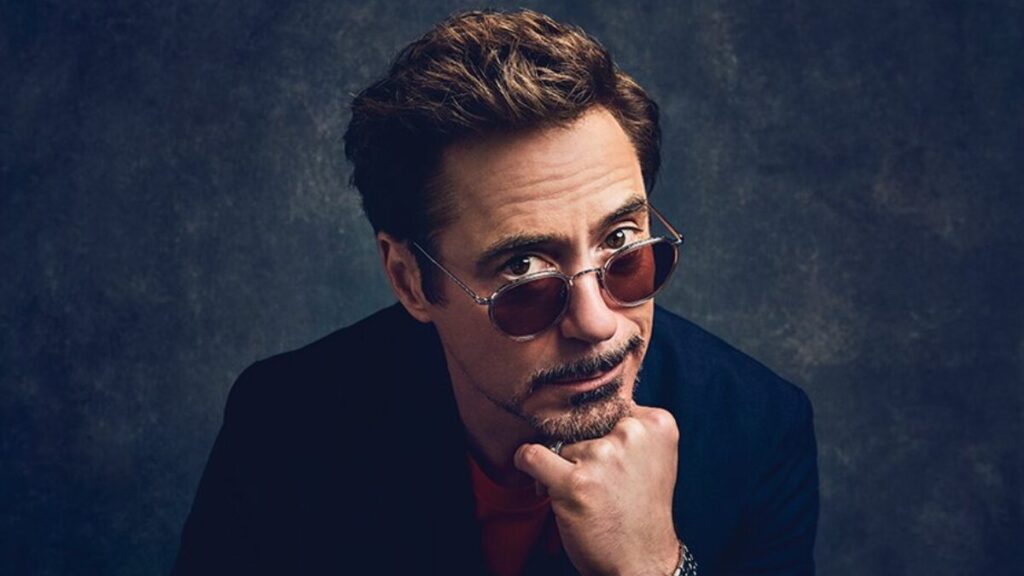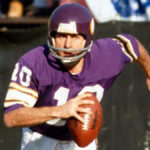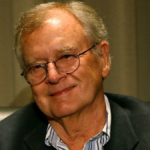In 2025, Robert Downey Jr.’s net worth sits comfortably north of $300 million — a staggering figure by any standard, but even more extraordinary when measured against the arc of his life. Two decades ago, he was a tabloid fixture and cautionary tale: a brilliant actor undone by addiction, courtrooms, and the brutal machinery of public scrutiny. Today, he’s not just Iron Man — he’s a symbol of reinvention, a savvy investor, a producer, and a global icon who turned personal collapse into financial and cultural triumph.
Downey’s fortune is more than a number; it’s a story of Hollywood risk, resilience, and reputation rehab at its finest. It’s the kind of redemption arc you expect from a screenplay, not real life. Yet here he is, standing at the intersection of wealth and wisdom, proof that even in an industry built on reinvention, few transformations have ever felt this complete or this profitable.
What Is Robert Downey Jr.’s Net Worth in 2025?
As of 2025, Robert Downey Jr.’s net worth is estimated to be $300 million, according to Celebrity Net Worth. While that figure places him among Hollywood’s wealthiest working actors, it only scratches the surface of how he got there — and why his fortune continues to grow even as his on-screen appearances have become more selective.
At the core of Downey’s financial empire is, of course, the Marvel Cinematic Universe. Between upfront salaries and groundbreaking backend profit participation deals — especially on Avengers: Endgame, where he reportedly earned $75 million — RDJ redefined what a franchise actor could demand. But acting is just one piece of the portfolio.
Downey has parlayed his fame into smart investments, including his production company Team Downey, eco-tech venture Footprint Coalition, and advisory roles in emerging tech sectors. Add to that a lucrative string of brand endorsements and residual income from earlier films, and the picture comes into focus: this isn’t just celebrity wealth — it’s a deliberately architected fortune.
In an era when many stars burn fast and fade, Downey has done the opposite. His net worth tells the story of a man who not only made a comeback but learned how to capitalize on it — intelligently, sustainably, and on his terms.
The Hollywood Paycheck That Changed Everything
Iron Man’s $500 Paycheck to $75 Million Payday
When Robert Downey Jr. was first cast as Tony Stark in Iron Man (2008), the decision was considered a massive gamble. Marvel Studios, still unproven as a solo film studio at the time, was hesitant — Downey’s troubled past with addiction and arrests made insurers nervous and executives wary. As a result, he was paid just $500,000 for the role that would ultimately redefine the superhero genre and his career.
But Downey bet on himself — and won big.
As the Iron Man franchise exploded, so did his market value. By the time The Avengers rolled out in 2012, he’d negotiated a backend points deal — meaning he earned a percentage of the film’s profits, not just a fixed salary. That move proved visionary. For Avengers: Endgame, his total haul is estimated to have reached $75 million, combining base pay and profit participation.
What started as a studio’s cautious experiment became one of the most profitable talent deals in cinematic history. Downey didn’t just play Tony Stark — he became him, wielding both charisma and contract savvy like a true superhero of Hollywood finance.
Key Film Contracts That Grew His Wealth
While Marvel turned Robert Downey Jr. into a global icon, it was his work outside the MCU that solidified his financial independence and proved he was more than just a one-franchise wonder. Projects like Sherlock Holmes and Tropic Thunder didn’t just succeed — they showcased his versatility and negotiating acumen.
Guy Ritchie’s Sherlock Holmes (2009) was a commercial hit, grossing over $500 million worldwide. Downey, who brought a playful yet razor-sharp take to the legendary detective, reportedly earned $10–15 million for the first film and even more for the 2011 sequel. Crucially, he was given creative input, helping to shape the tone and direction — a sign he was shifting from actor-for-hire to strategic collaborator.
Then came Tropic Thunder (2008), a bold satirical role that earned him an Oscar nomination and renewed critical respect. Though a modest payday compared to Marvel, it boosted his industry credibility at a crucial time — reinforcing his value beyond blockbuster spectacle.
These roles didn’t just pay well; they diversified his brand. Downey became a high-return investment for studios — an actor who could sell tickets, anchor a franchise, and elevate material across genres. And he negotiated accordingly.
From Jail Cells to Jet Sets: RDJ’s Financial Turnaround
At one point in the late ’90s, Robert Downey Jr. was better known for mugshots than movie roles. Arrested multiple times for drug possession and repeatedly in and out of rehab, his once-promising career seemed lost to the tabloids. Hollywood had closed its doors. Studios saw him as a liability. At his lowest, he was unemployable — a gifted actor without a safety net, with mounting legal fees and a dwindling bank account.
But Downey didn’t disappear — he rebuilt, brick by brick.
His recovery wasn’t instantaneous or glamorous. It was grueling. He credits a mix of therapy, martial arts, the support of his wife Susan, and a deep internal shift. “Remember that just because you hit bottom doesn’t mean you have to stay there,” he once said — a mantra that would guide his comeback.
When Mel Gibson helped insure him for The Singing Detective in 2003, it marked the beginning of a quiet return. But it was Downey’s consistency — showing up clean, prepared, and magnetic on screen — that restored trust. That trust became his most valuable asset. Directors, insurers, and audiences learned to bet on him again. And eventually, those small chances turned into jet-setting blockbusters and a financial empire few could have predicted.
Beyond the Screen — RDJ’s Business Moves and Investments
Team Downey: His Production Powerhouse
Launched in 2010 with his wife, producer Susan Downey, Team Downey is more than just a vanity label — it’s the cornerstone of Robert Downey Jr.’s evolution from actor to media entrepreneur. The company marked a crucial pivot: a way for RDJ to take ownership of the stories he tells and the money they generate.
Their first major hit, The Judge (2014), was a modest box office performer but a creative milestone, signaling Downey’s interest in prestige dramas and long-term IP building. Later projects like the Perry Mason reboot for HBO and Sweet Tooth on Netflix — both executive produced by the Downeys — expanded the company’s streaming presence. The upcoming Sherlock Holmes 3, still in development, is poised to be both a financial and franchise reboot under their full creative control.
Behind the scenes, RDJ isn’t just lending his name; he’s involved in casting, scripting, marketing strategy, and even tech integration through his interest in eco-conscious storytelling. It’s a deliberate move from being the face of other people’s franchises to becoming the architect of his own.
Team Downey isn’t just generating content — it’s generating equity, giving RDJ a stake in Hollywood’s future rather than just its paychecks.
Smart Bets: Green Ventures, AI Startups, and NFTs
It might surprise some that Robert Downey Jr.—once the poster child for Hollywood chaos—is now investing in the future of the planet. But that’s exactly what he’s doing through ventures like Footprint Coalition, the sustainability-focused organization he launched in 2019 to support cutting-edge solutions in climate tech, robotics, and clean energy.
Footprint Coalition operates both as a nonprofit initiative and venture capital firm, backing startups like Cloud Paper (tree-free paper products) and Ōura Ring (a health tech wearable). Downey has been vocal about using AI not just in film, but in environmental innovation—positioning himself at the crossroads of tech optimism and personal redemption. “I’m a one-man carbon footprint nightmare,” he joked at Amazon’s re:MARS conference, before pledging to offset his footprint with smart investments.
He’s also dipped into NFTs and blockchain-adjacent projects, though with more caution than hype. His involvement tends to favor storytelling or socially impactful tech, not just speculation—showing an eye for legacy, not just liquidity.
In a world where celebrities often chase trends, RDJ’s pivot to sustainability and tech feels strangely authentic. It’s the move of a man who knows what it’s like to crash—and now wants to invest in systems that prevent collapse.
Brand Endorsements and Media Presence
Robert Downey Jr. doesn’t flood the market with endorsements — he selects them. And that restraint is part of the strategy. From his longstanding relationship with Audi (cemented through Iron Man, where Tony Stark’s ride of choice became RDJ’s real-life signature) to more recent partnerships with Montblanc and Jaeger-LeCoultre, his brand alignments mirror the persona he’s meticulously rebuilt: sleek, elevated, intelligent.
These aren’t just product placements — they’re brand extensions. RDJ’s post-rehab reinvention has been rooted in credibility and sophistication, and his commercial partnerships reinforce that evolution. He’s not the guy selling fast fashion or soda; he’s the man in the tailored suit who speaks to craft, luxury, and innovation.
Beyond traditional endorsements, Downey has expanded his media presence through curated appearances on YouTube series, longform podcasts, and tech-forward events like Amazon’s re:MARS. These platforms allow him to share his voice — not just his image — and that subtle shift adds depth to his public profile. He’s no longer just an actor; he’s a cultural commentator, a technophile, and, increasingly, a business thought leader.
Together, his brand and media strategy elevate his market value without oversaturation, reinforcing that, like Tony Stark, RDJ knows exactly how to engineer influence.

How RDJ’s Wealth Compares to Other Marvel Stars in 2025
In the Marvel Cinematic Universe, no star shines brighter financially than Robert Downey Jr. As of 2025, his net worth—estimated to be $300 million surpasses that of many of his MCU co-stars. Chris Hemsworth, for example, is estimated at around $130 million, while Chris Evans sits closer to $110 million, and Scarlett Johansson—the highest-paid actress in the MCU—lands near $165 million.
But these figures aren’t just about screen time or fan following. RDJ’s commanding lead has everything to do with backend profit deals, early franchise risk, and longer-term leverage. When Marvel bet on him in 2008, they paid a fraction of what he would come to earn. But Downey negotiated smartly, leveraging Iron Man’s success into a series of contracts that included backend points and bonuses based on box office performance. That’s why, for Avengers: Endgame alone, he reportedly earned $75 million, while most co-stars had more traditional, fixed-fee deals.
Beyond contracts, there’s brand equity. RDJ’s reinvention — from liability to legend — adds a premium to everything he touches. His investments, production ventures, and curated endorsements extend his financial footprint far beyond the MCU, while others are just beginning to build their post-Marvel brands.
In short, RDJ isn’t just richer than his Marvel peers — he’s wealthier in a multidimensional sense: in cultural capital, creative control, and future-facing positioning. His fortune reflects not just who he played, but how smartly he played the game.
A Look at His Lifestyle: Homes, Cars, and Philanthropy
Malibu Mansions and Classic Cars
Robert Downey Jr.’s taste in homes and cars is anything but predictable — and that’s exactly the point. His primary residence, a whimsical Malibu estate nestled in the hills, feels more like a creative laboratory than a celebrity fortress. Designed in part with his wife, the property features bold art installations, eccentric decor, and eco-conscious upgrades — a blend of mid-century flair and futuristic minimalism that mirrors his offbeat intellect and love of reinvention.
Then there’s his car collection, which reads like a biography on wheels. Among the fleet: a 1970 Ford Mustang Boss 302, a custom electric-powered 1965 Corvette, and yes, several Audis — including an R8 gifted through his Iron Man affiliation. His garage doesn’t scream opulence; it murmurs narrative and nostalgia. Many of his vehicles are retrofitted with sustainable tech, reflecting a man who’s still writing his second act — but with intention.
Together, these assets speak volumes. Downey’s homes and cars aren’t just signs of wealth; they’re artifacts of identity. They reveal a personality that values storytelling over status, precision over flash — and someone who, even at the pinnacle of success, hasn’t stopped curating a life that feels distinctly his own.
Charity Work and Social Impact
Robert Downey Jr.’s philanthropic journey feels like a natural extension of his personal one — a shift from self-repair to global repair. At the center of this mission is the Footprint Coalition, a venture he launched in 2019 with the ambitious goal of marrying cutting-edge technology with environmental restoration. The coalition funds and amplifies startups focused on sustainability, from bioengineering soil-cleaning microbes to robotics that eliminate ocean waste — a far cry from the reckless persona of his earlier years.
But Downey’s giving isn’t just about money — it’s about intention and credibility. Rather than splashy donations, he’s focused on long-term investment in change. He’s spoken publicly about feeling a responsibility to “do more than act,” and his activism reflects that evolution. Beyond environmental causes, he’s quietly supported youth arts programs, addiction recovery initiatives, and veterans’ organizations, often aligning with projects that mirror his path of resilience and transformation.
In many ways, his philanthropic footprint completes the arc. It’s the final act in a redemption story where financial success becomes a platform for purpose. RDJ isn’t trying to cleanse his past — he’s trying to build a better future, one thoughtful decision at a time.
Inside Story — What Meeting Robert Downey Jr. Taught Me About Value
I’ve never shared a room with Robert Downey Jr., but one moment — a quiet comment from a long-form interview — has stuck with me like a handshake that lingers. It was during a roundtable years after Endgame, when he paused mid-answer and said, almost offhandedly, “You learn that reputation is a currency. Once you lose it, rebuilding it is the hardest hustle of all.”
He wasn’t talking about money. He was talking about trust, identity, and the invisible assets that shape a life. That line flipped something for me — because here was a man who’d earned hundreds of millions, but still framed value in terms of personal integrity, not just net worth.
Downey’s journey is so often framed as a comeback, but that word feels too simplistic. Comebacks are moments. His was a method — a slow, disciplined re-entry that rewrote his entire narrative. Watching how he chose his roles, his investments, even his public silences, taught me that the most successful people aren’t just marketable — they’re intentional.
Value, as RDJ seems to define it, isn’t what you earn. It’s what you restore. And that might be the most profitable lesson of all.
Lessons From RDJ’s Fortune — Grit, Reinvention, and Long-Term Play
Robert Downey Jr.’s fortune isn’t just a figure on a ledger — it’s a blueprint for long-term resilience. What sets his journey apart isn’t just the scale of his success, but how strategically he earned it. He didn’t ride a single wave; he built his own current, one bold decision at a time.
One of the most powerful takeaways? Reputation can be rebuilt — but only through consistency. Downey didn’t rush back into the spotlight. He showed up, did the work, stayed clean, and let his credibility accrue the way compound interest does: slowly, then exponentially.
He also knew when to bet on himself. Taking backend points instead of big upfront salaries wasn’t just smart negotiation — it was a high-risk move based on self-belief. That’s a lesson for anyone: the bigger the long game, the more you have to trust your future self to deliver.
Perhaps most importantly, RDJ’s success is proof that your past doesn’t get the final word — your strategy does. Whether you’re building a business, pivoting careers, or trying to recover from failure, his story reminds us that redemption isn’t luck. It’s a skill. And wealth, in all forms, follows those who are willing to earn it more than once.
A Fortune Forged Through Flaws and Fire
Robert Downey Jr.’s net worth in 2025 isn’t just a testament to blockbuster paydays or clever business deals — it’s a mirror reflecting one of the most dramatic personal and professional reinventions in modern pop culture. From jail cells and courtrooms to red carpets and boardrooms, his journey charts more than recovery; it marks mastery over the forces that once nearly unraveled him.
What makes Downey’s story resonate isn’t just that he became rich again — it’s how intentionally he did it. He turned second chances into strategic moves. He learned to leverage not just fame, but credibility. And in doing so, he reclaimed control over a narrative many thought was already written.
In a world obsessed with meteoric rises, RDJ reminds us that slow climbs can build deeper roots. His fortune stands as proof that even the most fractured legacies can be reforged — not in spite of the fire, but through it. And that might be his greatest role of all.
Mohit is a celebrity finance expert and co-founder of TheNetWorths.com, with over 10 years of experience analyzing celebrity income, brand deals, and the creator economy. He delivers data-backed insights on how today’s stars grow their wealth and influence—trusted by readers and digital entrepreneurs.




















2 thoughts on “Robert Downey Jr. Net Worth 2025: How He Built a $300 Million Fortune from Redemption to Stardom”